Semi-controlled quality, Hornby’s Coronation?
“It’s a Semi!” I am sure that is what young train spotters used to shout in 1959 at the sight of a Coronation Class Pacific. I am guessing, ‘Semi’ because it had been semi streamlined as opposed to fully streamlined like the ‘streaks’ (A4s) on the East Coast Mainline.
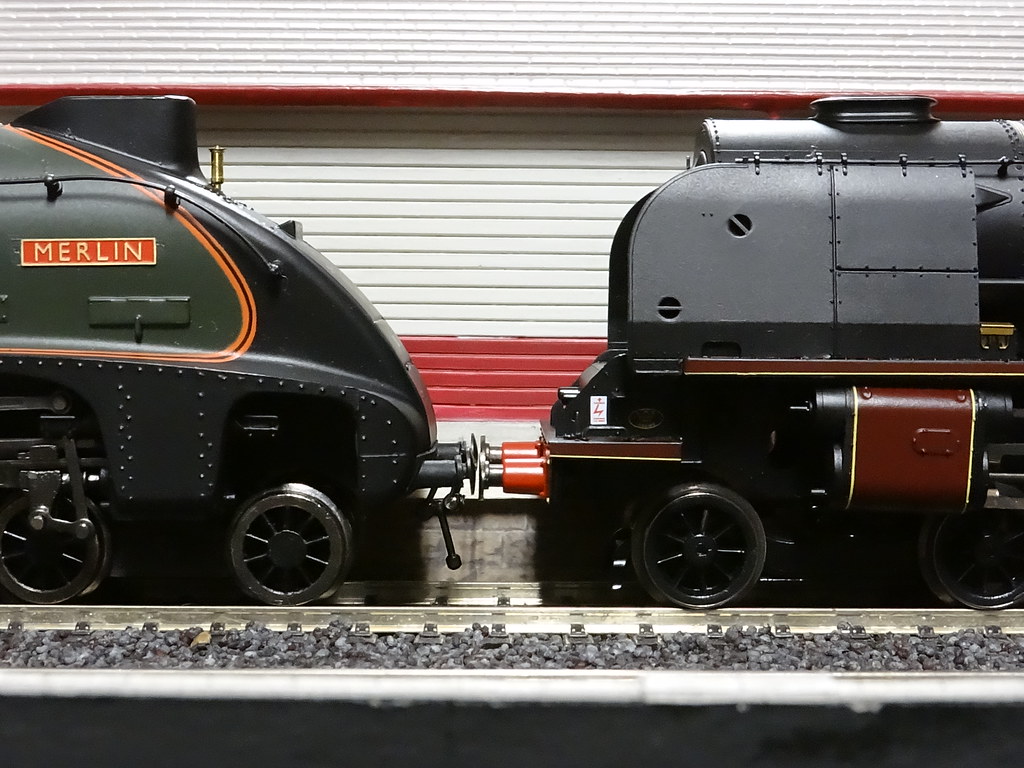
East meets West (or Streaks and Semis)
The’ Coronations’ were introduced by Sir William Stanier in 1937, the same year as the coronation of George VI and Elizabeth Bowes-Lyon with the first member of the class named ‘Coronation’. The locomotives were the logical development of the earlier ‘Princess’ Class and initially all the original Coronations were streamlined, with the exception of 46230-4 / 49-55. The streamlining was gradually removed from 1946; 46243 (City of Lancaster) being the last member of the Class to have its streamlining removed in 1949. In 1947 George Ivatt (Stanier’s successor) added two further locomotives to the Class (46256-7). These last two members of the Class were never streamlined and were built with detailed differences to the original locomotives.
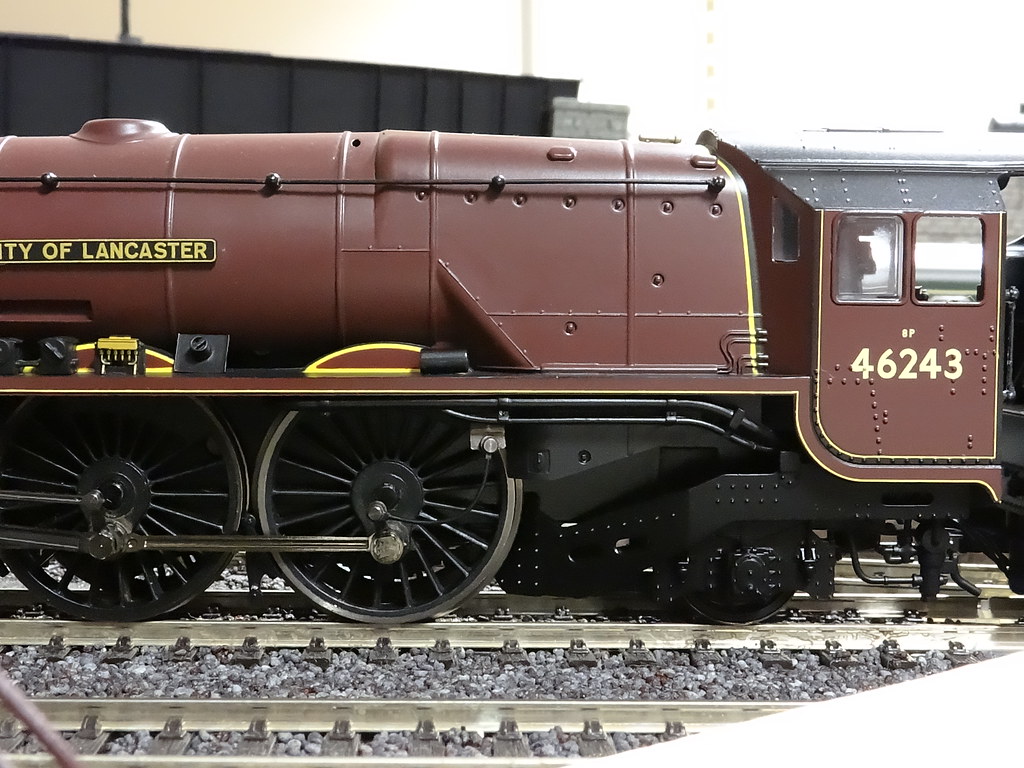
City of Lancaster – originally streamlined
One of the more obvious differences being in the area below the cab.
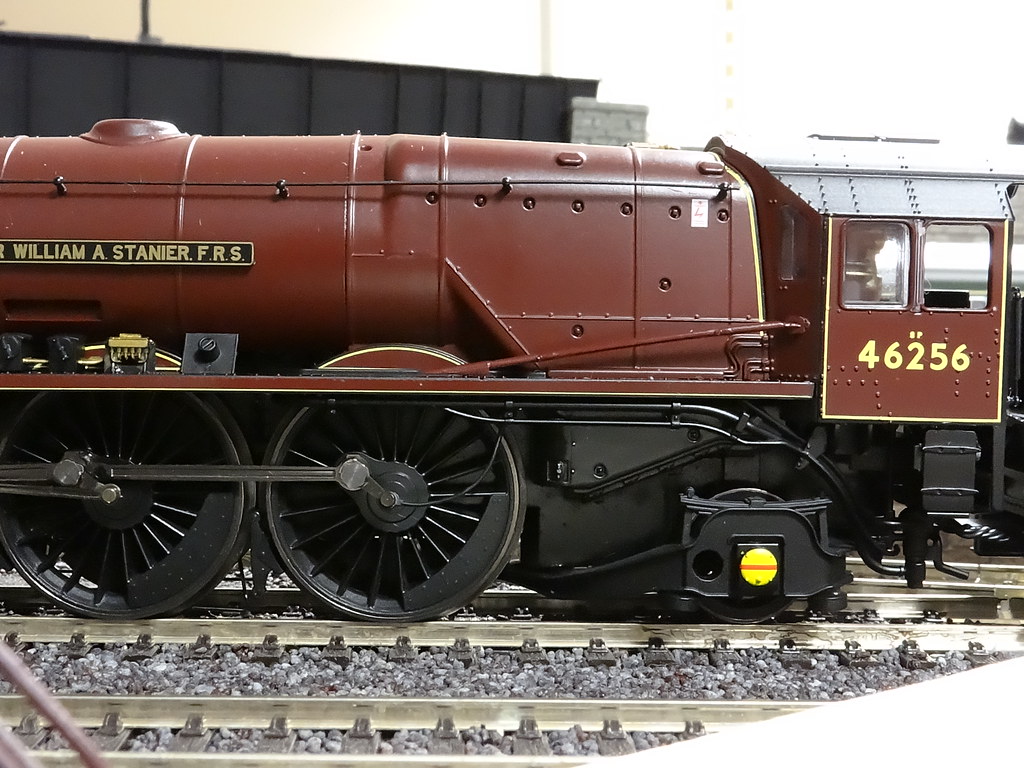
Sir William Stanier – an Ivatt engine
From the front there is little to choose between my models of Sir William and Lancaster (originally streamlined). Stanier engines constructed from new without streamlining frequently retained their original curved footplate at the front (without a step) with a similar profile to the curve beneath the cab.

Stepped running plates - Sir William Stanier (left) City of Lancaster (right)
The streamlined engines had streamlined tenders - insomuch as the tender sides were extended beyond the back of the tender. The tenders for the Ivatt engines were constructed without any extensions as shown on my Hornby models below.
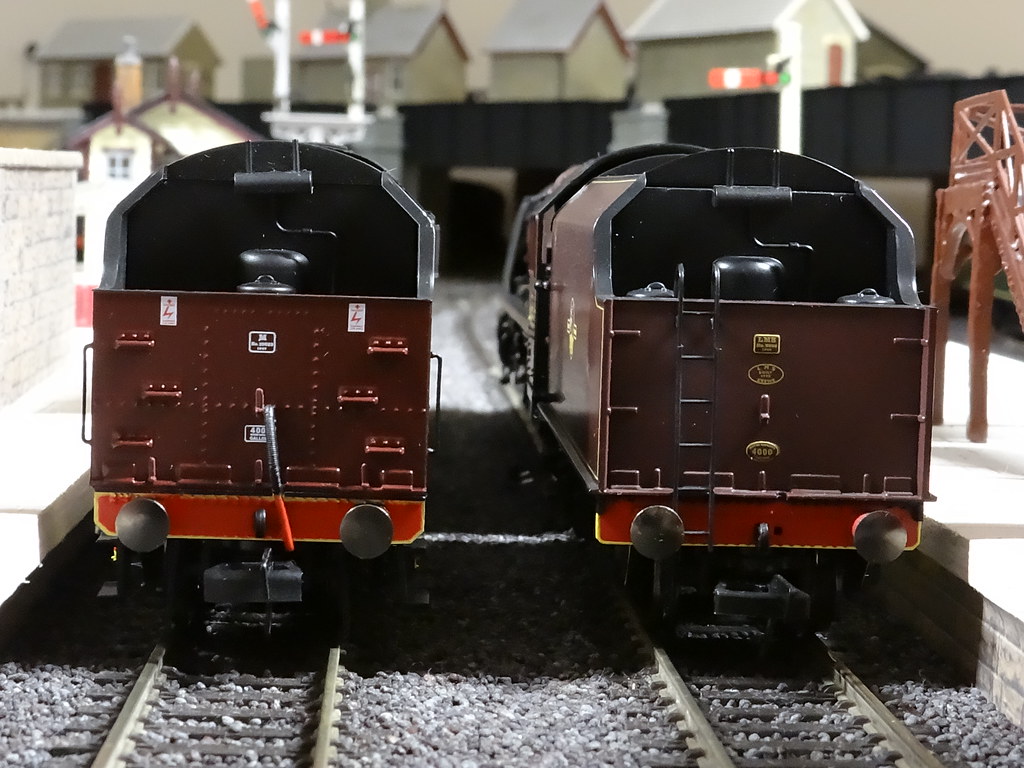
Spot the streamlined tender - Sir William Stanier (left) / City of Lancaster (right)
I have included some further views of the tenders:
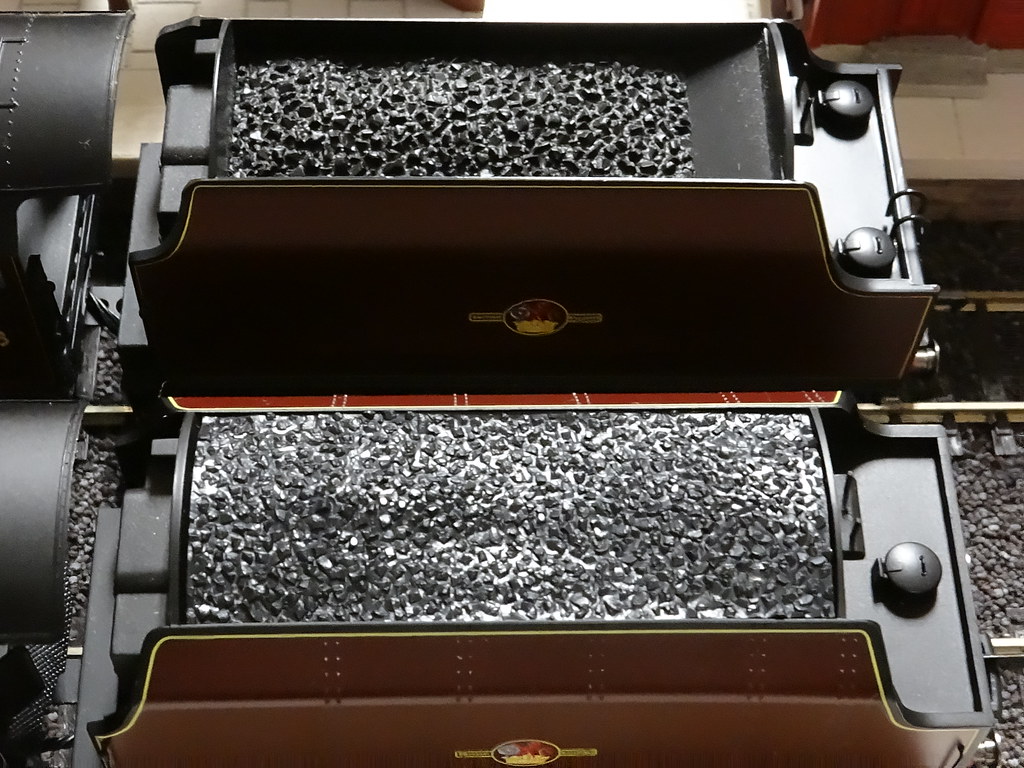
Tender tops, City of Lancaster(upper) / Sir William Stanier (lower) (with the coal pusher covered up)
I have also added some further views of my models which highlight the different shades of maroon used by Hornby for City of Lancaster from 2010 and Sir William Stanier 2017.
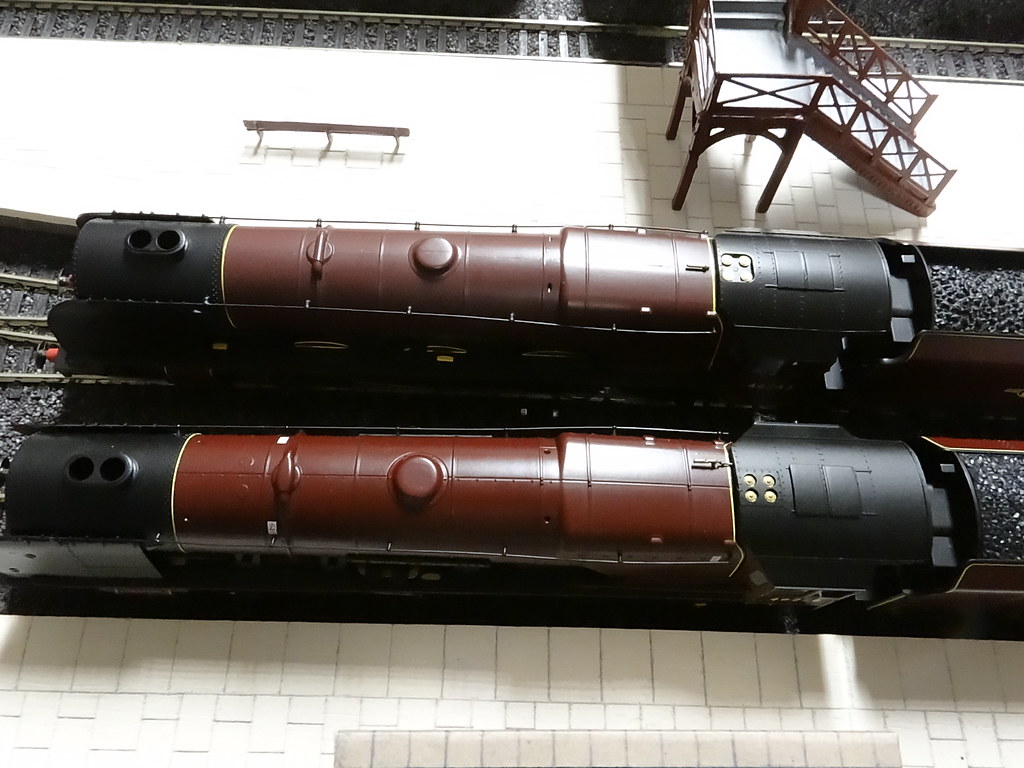
Boilers - City of Lancaster (upper) / Sir William Stanier (lower)
The above view and the picture below would confirm that Hornby’s Ivatt model would have to be completely new tooling from that of the earlier Stanier models.
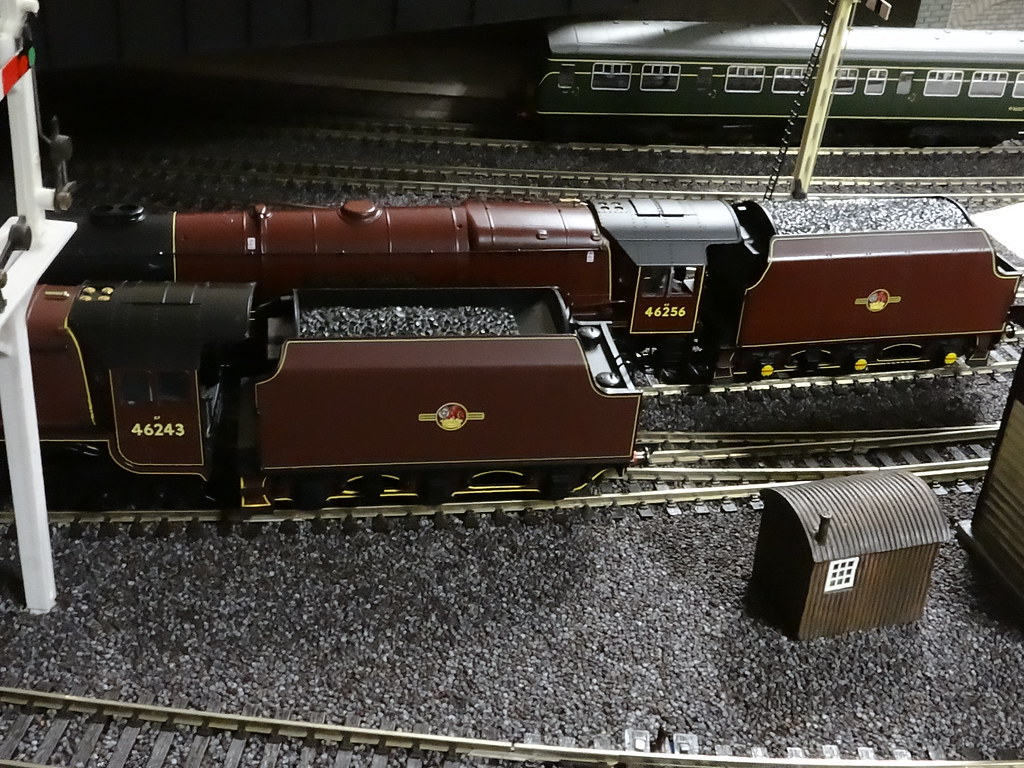
Comparison - Sir William Stanier (upper) / City of Lancaster (lower)
Hornby’s latest Ivatt model certainly looks good. That is as long as you received a model without glue marks on the cab roof or bites out of the nameplate like my first model. I am also puzzled as to why Hornby’s tender drawbar is machined for two positions when the location of the electrical socket makes it impossible to use the ‘close coupled’ position.
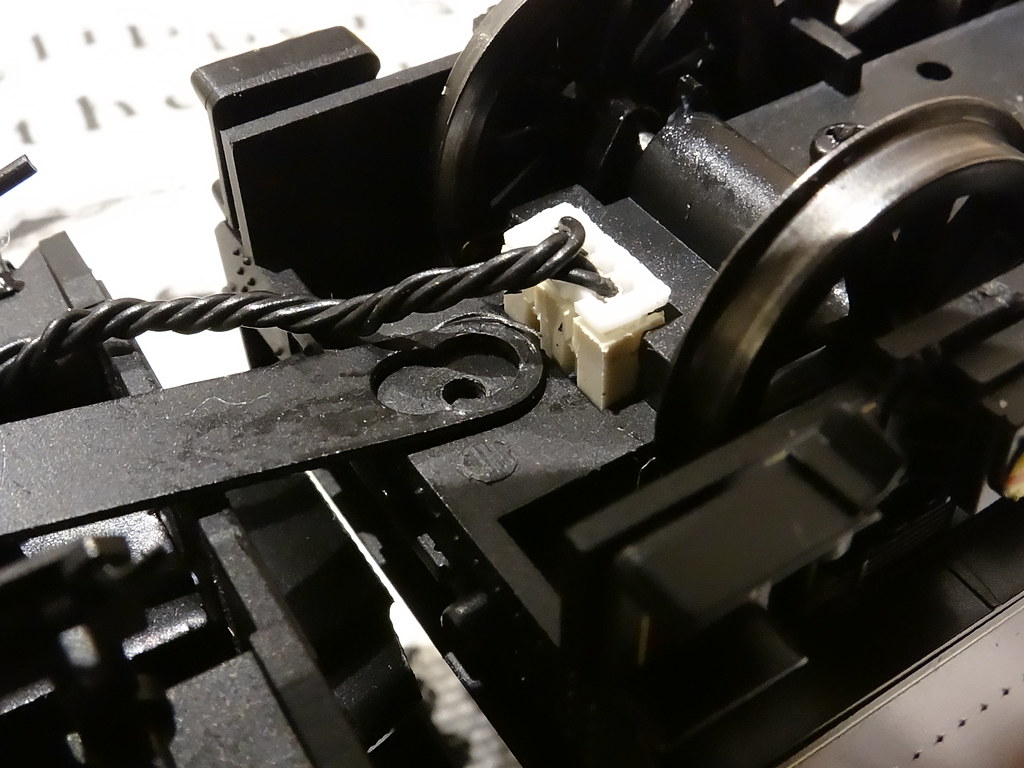
Hornby R3555 - tender drawbar
I didn’t run my first model but after a few running laps my second model started to jump the track – notably at one particular set of Peco large radius right hand electrofrog points. A close inspection indicated that the first pair of driving wheels was attempting to climb over the railhead.
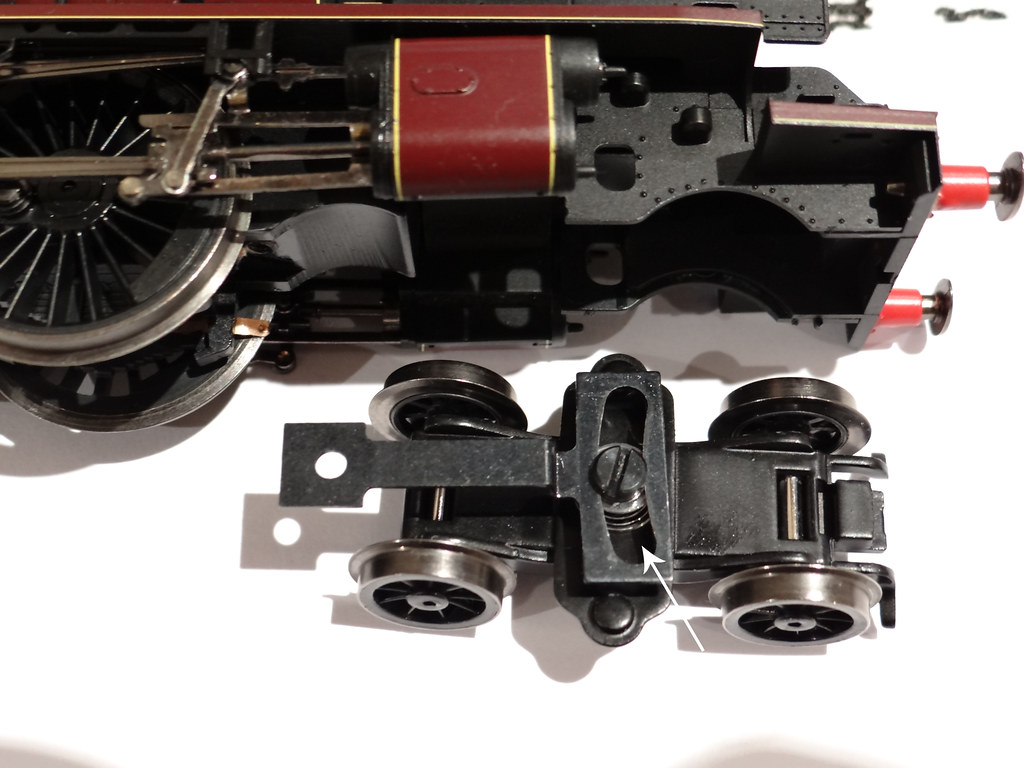
Spot the spring
Sir William has a lighter and more finely detailed front bogie than the earlier Hornby Stanier models. Possibly to compensate for the loss of weight the pivot now incorporates a small spring (similar to most Bachmann models). A quick check confirmed that the front bogie on my model was nicely in contact with the track and hence behaving as might be expected.
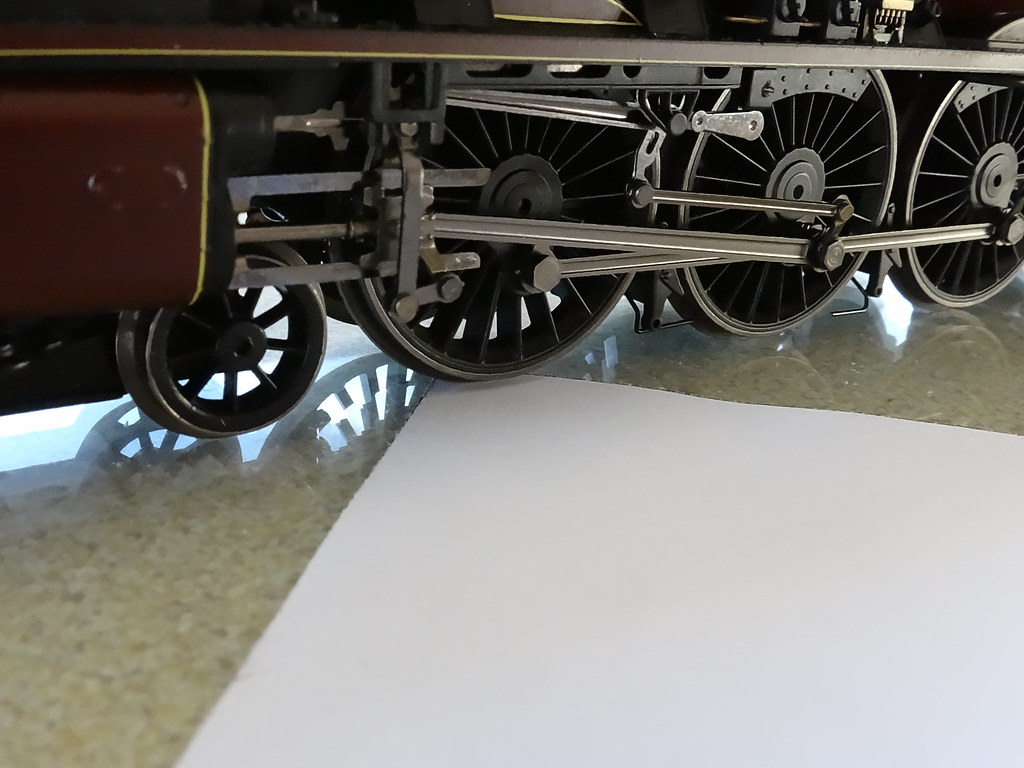
Do all the wheels make contact with the track? - Hornby R3555 on a glass plate.
I had remembered that when King George was wheeled out by Hornby for Christmas 16/17 I had to correct a model where the axle slots had not all been milled to the right depth. Placing Sir William on a sheet of glass and testing with a piece of paper showed a space beneath the front left driving wheel – the very wheel that was showing a tendency to climb off the track.
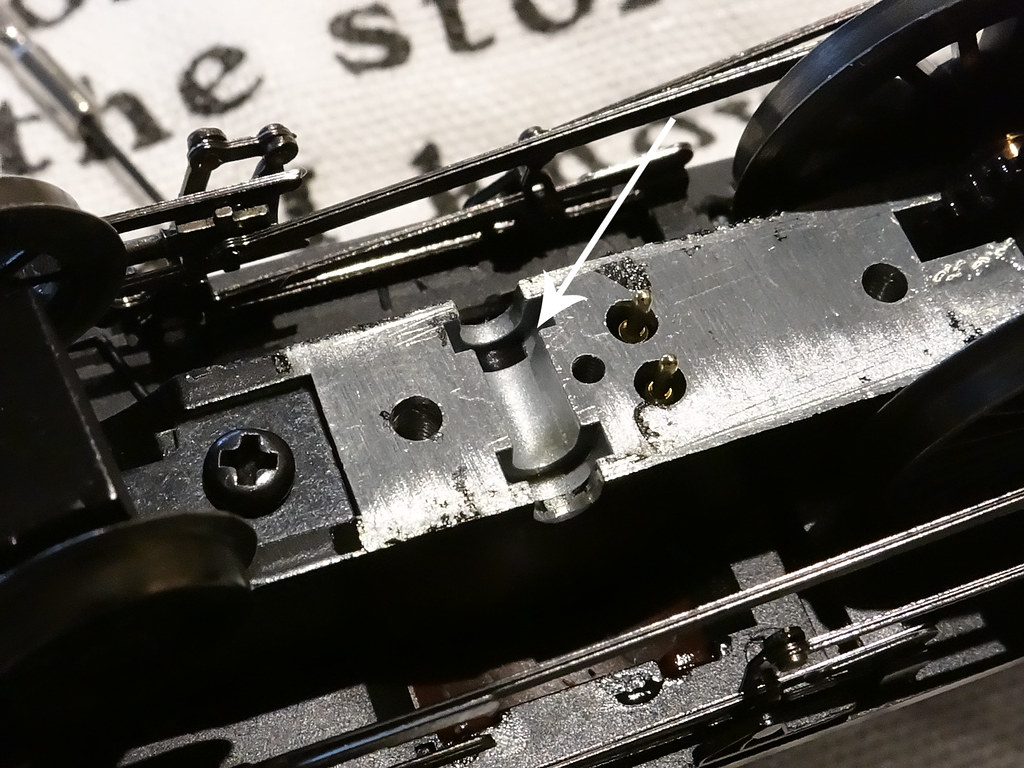
Spot the piece of electrical tape (arrowed) for packing
It appeared that only the one axle bearing location was affected and more by guesswork and good luck I was able to pack the bearing slot with a tiny piece of black PVC sticky tape. Prior to applying the tape I had degreased the slot out with a dab of surgical spirit on some cotton wool.
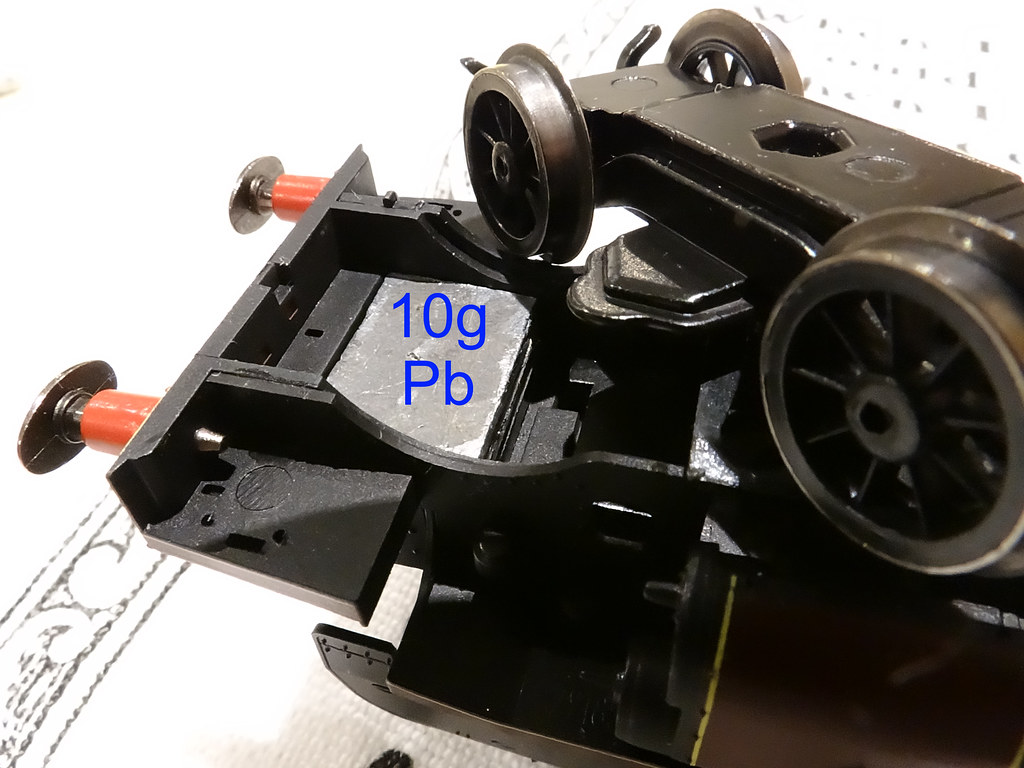
10g of lead beneath the footplate
The front end of Sir William seems to me very light so I also added 10g of lead to the underside of the footplate. Success – I have a good runner. I have posted a short before and after video clip. There is a distinct clunk very near the beginning where the unmodified engine attempts to leave the track. This clunk is absent in the second pass after the modification.
http://youtu.be/eU4mDpZ7zvc
Before and after packing the bearing slot
I bought City of Lancaster new in 2010 for the not inconsiderable sum of £97.00 – I think quite expensive for the time. The paint finish (as opposed to the shade of maroon) could be better. It has had a new wheel set to stop it jumping about the track. It now has added lead and is a super smooth and quiet engine.
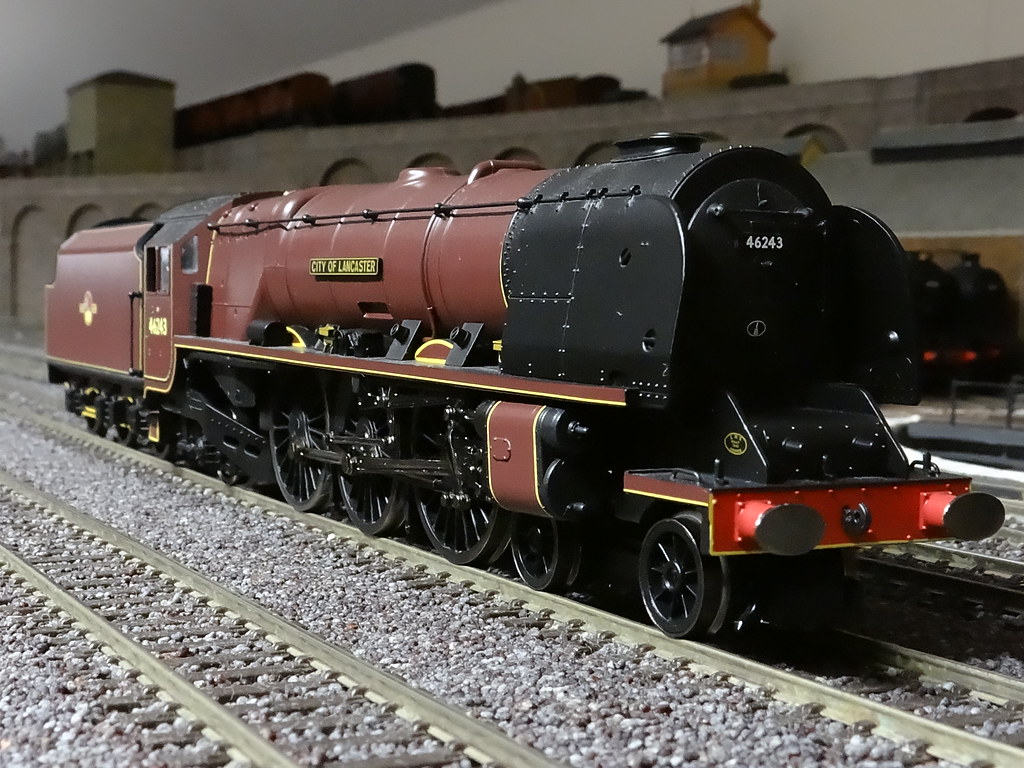
Hornby City of Lancaster from 2010
I am now well pleased with Sir William which I think is a good looking model.

Hornby Sir William Stanier November 2017
However I am only semi-pleased with Hornby who yet again have delivered faulty models and on this occasion were unwilling to assist with or replace the model with traces of glue on the cab roof. I should add that I was refunded in full by the retailer but that it was only by some quick thinking that I was able to obtain the second model from a different supplier. I don’t know the size of Hornby’s production run but most online retailers sold out within days of the model being released and I believe some retailers did not receive enough models from Hornby to fulfil all their preorders.
Addendum added 04.12.17
Things that make you smile!
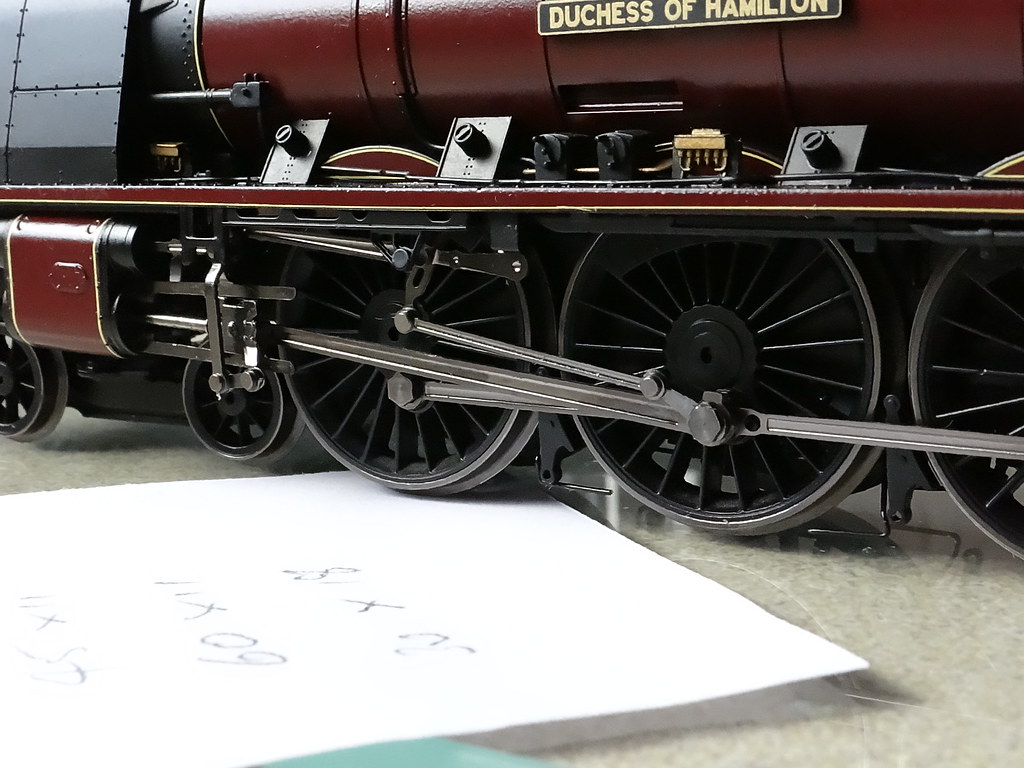
Duchess of Hamilton
I have now had chance to examine Duchess of Hamilton. My model jumps the track in exactly the same location as Sir William.
Back to the glass plate and I can slip a piece of paper beneath the same left front driving wheel as Sir William.
I will be applying some tape beneath the axle bearing as detailed above.
I don't know whether the bearing slots are machined or formed by casting, either way I am inclined to think that there is a basic dimensional error present.
Addendum added 06.12.17
Looked beneath 'her ladyship' and noticed that there wasn't a water scoop. Emailed Locomotion to ask if they could send me the missing part. Instead I had a telephone call and was told that a replacement model was being sent out together with an address label to return the first. The replacement arrived this morning - less than 24 hours later. Truly excellent service.
Before you ask - yes I have placed it on my plate glass. For practical purposes all the wheels sit in contact with the glass. It even runs quite nicely.
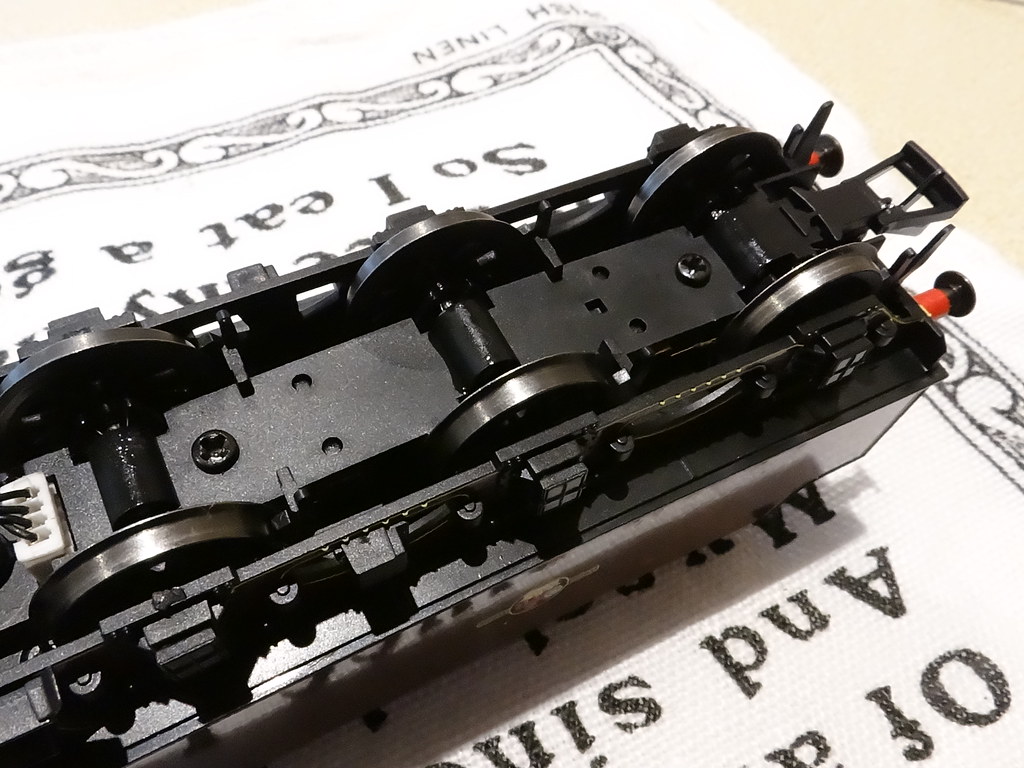
Duchess of Hamilton I - spot the missing water scoop
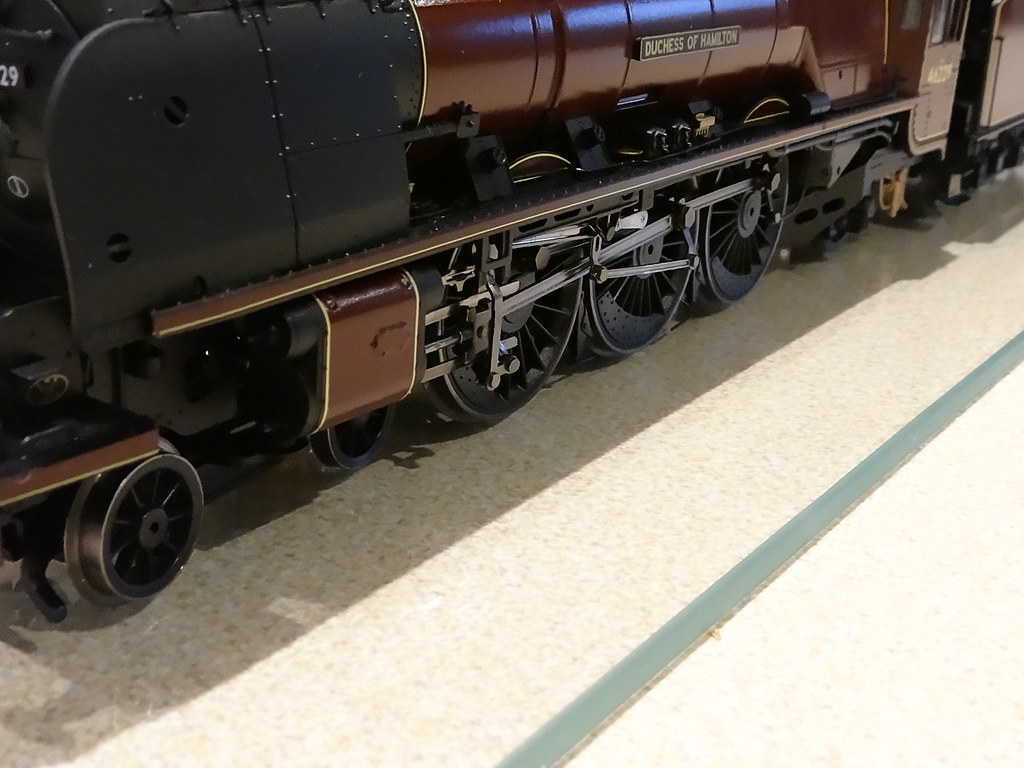
Duchess of Hamilton II
-
 3
3


.thumb.jpg.60c53fcbcaa34017b05b8919d1a9e6d2.jpg)

3 Comments
Recommended Comments
Create an account or sign in to comment
You need to be a member in order to leave a comment
Create an account
Sign up for a new account in our community. It's easy!
Register a new accountSign in
Already have an account? Sign in here.
Sign In Now